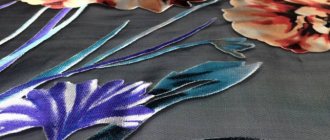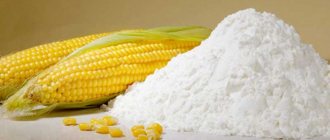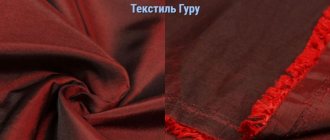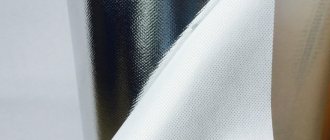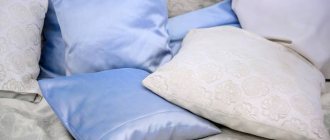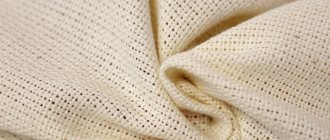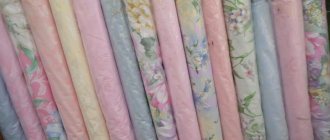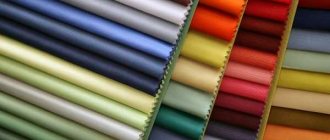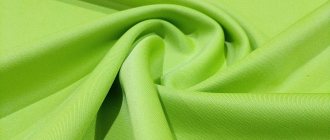Use of polyamide materials
Polyamides have a wide range of applications. The main areas of use of the material are as follows.
- Light and textile industry. In this manufacturing industry, polyamide serves as a raw material for the production of artificial nylon and nylon fabrics, carpet, rugs, synthetic fur and yarn, stockings, knee-highs, socks, and tights. Polyamide fiber is also produced as an independent product.
- Production of rubber products (RTI). Polyamide is used to make rubberized cord fabrics, ropes, filter fillers, conveyor belts, and fishing nets.
- Construction. The material is used for the manufacture of pipelines and shut-off and control valves. Concrete, wooden surfaces and ceramics are coated with polyamide to give them antiseptic properties. Used as an anti-corrosion coating for metal structures, adhesives and paints.
- Mechanical engineering. The polymer is used for the production of various bushings, rollers, shock absorbers, silent blocks, inserts, anti-vibration pads and similar products.
- Food industry. Polyamide is a material that allows contact with food products, therefore it is used for the production of containers, containers for drinking liquids and other containers designed for storing and transporting food products.
- Medicine. Polymer is used to produce artificial vessels and veins, implants, prostheses and other substitutes for human organs. Polyamide fabrics and threads are used for suturing after surgical operations.
Varieties and modifications
The modern chemical industry produces various types and modifications of polyamide materials:
- The most numerous is the group of aliphatic polyamides, which in turn consists of several subgroups (crystallizing homopolymers, crystallizing copolymers and amorphous polymers).
- A very common group is aromatic and semi-aromatic polyamides (PAA), which includes crystallizing polyphthalamide compounds and some amorphous substances, such as polyamide-6-3-T.
- The third well-known group is glass-filled polyamides. Substances in this group are also called composite modified polyamides and consist of a binder resin filled with glass beads and structured fibers.
On the industrial materials market, polyamides are found under the following trademarks and names: Basf Ultramid, Basf Capron, Ultralon, Lanxess Durethan, DSM Akulon, Rochling Sustamid, Ertalon, Nylatron, Tekamid and others. The variety of commercial names hides polymers and polyamide fiber from the groups listed above.
Waterproof and water-repellent fabric - types and properties
People have tried many different materials in an attempt to protect themselves from moisture, rain and snow. Thick fabrics, leather, rubber and other natural materials provide good protection in bad weather, but they have their drawbacks. Currently, synthetic water-repellent materials are increasingly used, and natural fabrics are subjected to additional processing.
Natural materials
The first truly water-repellent and waterproof fabric was invented by Charles Mackintosh. Thick woolen fabric was impregnated with rubber. The material did not allow water to pass through, but was very heavy. Over time, the quality of rubberized fabric has improved significantly. Now expensive raincoats are made from it, the model of which is called “Mackintosh” in honor of the English inventor.
For mass production of clothing, tents, bags, workwear and much more, materials of mixed composition are used. They combine natural fibers with artificially created ones, and the surface is treated with a water-repellent coating. Cotton and nylon are most often combined. Blended fabrics are usually produced using plain weave. They do not require special care and have increased wear resistance.
Synthetic materials
Membrane materials are the most popular among fabrics with waterproof properties. They do not allow moisture to pass through and at the same time have good breathability. The membrane is made of polymers and can vary greatly in quality and characteristics. In addition, polyester and polyamide (nylon and nylon) protect from bad weather conditions.
Types of waterproof materials:
- Taslan Hi Pora. Durable raincoat membrane fabric. Removes sweat and does not allow water to pass through thanks to the porous coating on the inner surface.
- Taslan WR, PU. Low hygroscopicity, resistance to ultraviolet radiation and mechanical stress, high breathability.
- Oxford. Made from polyester or nylon. Coverage and density depend on the purpose of the fabric.
- Taffeta. Wear- and deformation-resistant fabric made from lavsan, polyester or nylon. Depending on the coating, it has enhanced water- and dirt-repellent properties and provides protection from wind and frost.
- Dewspo. Lightweight polyester material with good breathability.
- Acrylic. Resistant to moisture and sunlight. May have a mixed composition.
- Gore-Tex. A porous membrane material used in combination with polyester or nylon.
- Tyvek. A thin and light porous material resembling a film. Used for tents and equipment.
The protective properties depend on the fabric fibers, density, the presence of special threads and the type of coating. All these characteristics, including water repellency, must be indicated in the labeling of the product or material. But understanding abbreviations can be difficult. What do the mysterious letters and numbers on the label mean?
The density of the material is designated DEN or D and depends on the thickness of the thread. With D from 150 to 420, the fabric is used for sewing outerwear, tourist and hunting equipment. With a density from 420 to 600 - for shoes, bags and suitcases. The higher the density, the higher the water resistance of the fabric.
Weaving density and strength are indicated by the letter T (Tech). The higher this indicator, the denser the fabric will be and the better it will protect from bad weather.
R/S (RIPSTOP) denotes a type of weave with a thick fiber frame. It not only increases the waterproof properties, but also increases the strength of the material.
Types of moisture-proof coatings:
- PU - polyurethane impregnation of the internal surface. The numbers following this abbreviation indicate the degree of protection against water or water resistance in mmHg. At PU up to 1500 the fabric is non-waterproof, at 3000 it will withstand any precipitation.
- PU milky is an impregnation that enhances the rigidity of the fabric. It makes the material less transparent.
- PU/SI - polyurethane coating reinforced with silicone, can be applied to the front or back side. This increases the strength of the fabric and prevents moisture from accumulating in the fibers.
- PA - polyamide coating. Almost no air passes through.
- WR (DWR) - water-repellent impregnation applied to the front surface of the fabric. Thanks to this treatment, drops of water simply roll down the material and are not absorbed. Used for sewing extreme clothing, tents and travel equipment. Requires special care and is washed off after prolonged use.
- PVC - rubberized coating on the reverse side. Fabric treated with it is absolutely waterproof and resistant to fire and chemicals. Used for workwear and extreme equipment.
The waterproof properties of any item depend not only on the characteristics and quality of the fabric, but also on the treatment of the seams. If they are not glued, moisture will penetrate inside through the needle punctures. It is best if a layer of silicone or other water-repellent compound is applied to the seams.
tkaninfo.ru
How to obtain rubber-impregnated fabric
In the 17th century, unusual trees were found in South America. Their juice instantly set in the open air like glue, only stronger. Since then, scientists around the world have been looking for ways to use it.
In England, one scientist mixed the sap of this tree and turpentine, and then began to coat the fabric with this mixture. He found that the water did not penetrate deep into the fibers. Since then they began to produce rubberized things.
What does the fabric look like?
Note! Natural materials are usually used as the basis: thin or thick strong cotton. chintz, silk, wool. But there are also synthetics used: nylon or nylon.
Rubber is applied using the following methods:
- Rubber-coated apparatus (a thin layer of composition is applied to the fabric);
- Coating;
- Lining on calendars.
Water repulsion
When performing work on a glue-spreading machine, rubber glue, 90% consisting of gasoline, is smeared onto the material, on the one hand, which is 90% gasoline, which then evaporates during operation.
The next step is the process of continuous vulcanization and the transition of rubber into rubber. This process was discovered by the scientist Charles Goodyear in 1845. He was called Vulcan the God of Fire. Its essence lies in the contact of rubber with sulfur and hot processing, after which its molecules merge into a common spatial network. As a result, the strength, hardness and flexibility of the fabric increases, and its plasticity and ability to deteriorate and dissolve in water decreases.
Discoverer of vulcanization
When using things made of rubberized materials, you need to avoid contact with sharp objects, because in the event of a cut, all its positive properties will be lost. Mechanical defects cannot be repaired, so professional repairs will be necessary. Dirt can be quickly removed with a soft cloth or sponge soaked in soapy water. After this, soap stains should be removed with a clean cloth. If the product has been stored for a long time and has become very hard, it must be moistened in water with ammonia. Do not clean with gasoline or white alcohol.
You might be interested in Description of the properties of taffeta: use of fabric
Advantages and disadvantages of asbestos fabric
Fabric with asbestos, which has unique properties, is widely used almost all over the world - in some countries its use is prohibited: it is believed that dust spreading from the material can cause cancer. According to the latest data, harm to health can only be caused by inhaling a significant amount of it. In any case, when working with asbestos fabric, you must follow safety precautions.
Advantages:
- uniqueness: there are no high-quality artificial analogues;
- heat resistance: resistance to fire without loss of original properties;
- strength and wear resistance;
- durability: warranty for products with viscose and cotton composition - 5 years, with lavsan - 10 years;
- relatively low cost.
Flaws:
- fibrogenic: due to inhalation of dust in large quantities.
Materials replacing asbestos fabrics lag behind the original in many respects. Therefore, it is better to use a natural product that is colored white, grey, yellow or natural. Thus, the properties remain the same and dust emissions are reduced to a minimum.
Use in clothing.
Why do they use rubberized fabrics in clothing?
- Price: this is one of the advantages of the fabric; the price is one of the lowest on the Russian market.
- Practicality: clothes made from such materials can be worn in any weather, and they are also very easy to care for.
- Versatility: but, unfortunately, such things cannot be worn every day. They do not allow air to pass through well and the person will constantly sweat.
- Durability: such things do not have the highest strength; if you do not fall carefully or catch on a wooden branch, you can tear it.
It is very convenient to have an oilskin suit for fishermen or hunters, people involved in active and extreme sports that are subject to various climatic changes (heat, rain, snow). Tents with rubberized fabric are very effective.
Production process
These can easily withstand thunderstorms, without the risk of moisture getting inside. But the most popular are boots. They are very comfortable to walk through mud and water. According to the rules, people working in the electrical field must wear only such shoes. So that the discharge does not pass through the body.
Application areas of asbestos fabric
Materials containing asbestos have high performance characteristics and are therefore used in a variety of fields. Using such fabrics, slate, fire-resistant products, and pipelines are produced. They are used to make protective clothing, including for firefighters, and create electrical and thermal insulation. They are also used as:
- additives to cement to increase strength;
- anti-friction brake elements;
- technical ingredients in the production of pebbles;
- filler in plastics and resins;
- binder component for asphalt pavement;
- material resistant to acidic compounds;
- multifunctional filters.
In addition, asbestos fabric is used to create asbestos textile laminate, rubberized material, cuffs and gaskets. Some fabrics are used in aviation, metallurgy and even in the food industry.
Technical purpose
Rubberized fabric for technical needs is used in the production of inflatable things - waterproof suits, for equipment, medical products. They combine increased strength, water resistance, resistance to low temperatures and resistance to detergents.
Balloon materials will be the most important type of fabric for technical purposes. They are mainly used for the shells of balloons, airships and stratospheric balloons. In the creation of balloon products, only strict rules are used in terms of control and systematic laboratory testing.
You might be interested in Description of the properties of taffeta: use of fabric
Such rules are prescribed in the technical specifications for balloon products, which determine low gas permeability, low weight and high strength.
Impregnating aerosol
In many industrial enterprises where work involves welding, machine tools and other dangerous equipment, rubberized suits and shoes are used. This helps avoid accidents, such as chips bouncing off the metal during cutting and landing on the suit rather than on the person's bare hands. It can leave deep scars, so it is better for the suit to be damaged than for the person to be injured.
Using the most popular brands
Each brand of asbestos material, having individual technical and operational characteristics, has specific application features.
- AT-1S, AT-4 are used to create packings, sleeves, asbestos-textile laminates, and heat-insulating gaskets.
- AT-5 – for strengthening insulation in heat engines.
- AT-1S – for the production of rubberized fabric.
- AT-2 and AT-3 – for the manufacture of special equipment and compaction of heat-insulating boards.
- AT-6 – for diaphragms required for electrolysis: the operating temperature in this case is up to +100°C.
- AT-7, AT-8 – for thermal insulation and cushioning products.
- AT-7, AT-13 – for gasket and heat insulator: withstands temperatures up to +400°C.
- AT-9 – for thermal insulation.
- AT-16 – for diaphragms for conventional water electrolysis.
- AST-1 – for thermal insulation of surfaces with heating temperatures up to +500°C.
Since asbestos-containing dust has a fibrogenic effect, the lungs are most vulnerable when working with asbestos fabric. They, first of all, must be protected by a respirator from pathogenic aerosols. The maximum single concentration of dust in the air should not exceed 2 mg/m3, while the monthly average should be up to 0.5 mg/m3.
